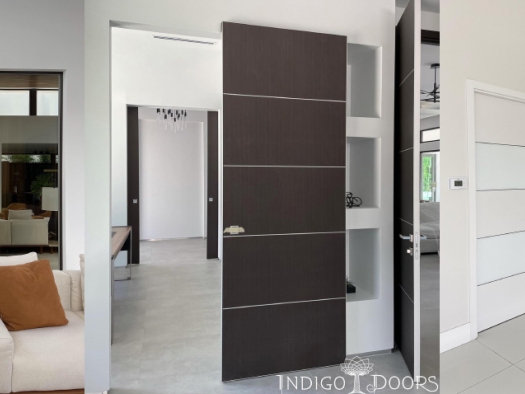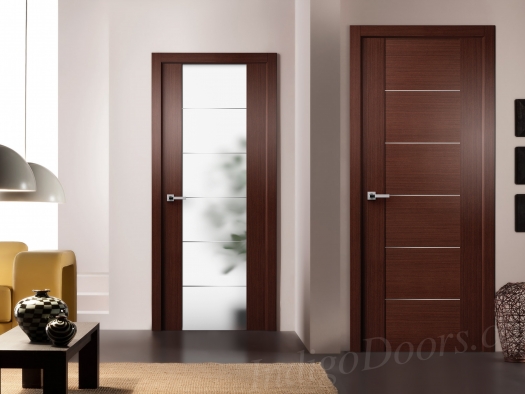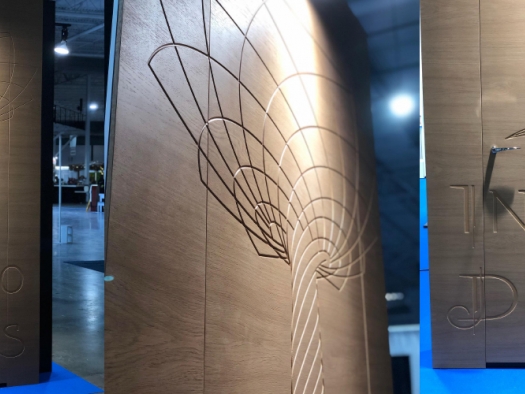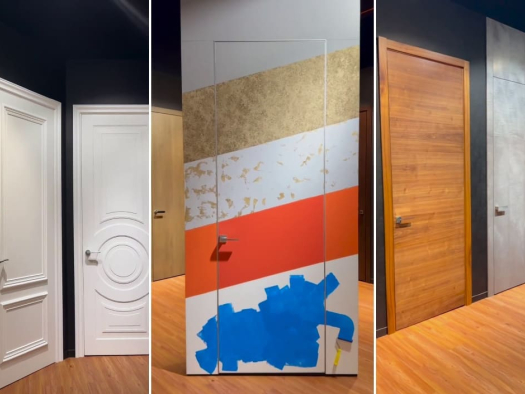- Understanding the Challenges of High-Moisture Environments
- Importance of Proper Door Selection
- Materials Matter: Exploring Moisture-Resistant Options
- Solid Wood Doors: Pros and Cons in Moisture-Prone Areas
- Engineered Wood Doors: A Viable Alternative
- Fiberglass Doors: Resilience in Wet Environments
- Vinyl Doors: Durability and Moisture Resistance
- Considerations for Door Hardware and Hinges
- Sealing and Finishing: Enhancing Moisture Resistance
- Maintenance Tips for Longevity
- Balancing Aesthetics with Functionality
- Installation Tips for Optimal Performance
- Budgeting for High-Moisture Door Solutions
Understanding the Challenges of High-Moisture Environments
Moisture-rich environments like bathrooms, pools, and spa rooms pose unique challenges when it comes to selecting interior doors. The constant exposure to moisture and humidity can cause traditional doors to warp, swell, or even rot over time. Understanding these challenges is crucial in choosing the right doors that can withstand such conditions.
In high-moisture environments, traditional wooden doors are particularly susceptible to damage. Wood absorbs moisture easily, leading to swelling and warping, which can compromise the functionality and aesthetics of the door. Additionally, prolonged exposure to moisture can promote mold and mildew growth, posing health risks and further deteriorating the door's condition.
Proper ventilation and moisture control measures can help mitigate these issues to some extent, but selecting moisture-resistant doors is essential for long-term durability and performance in such environments. By understanding the specific challenges posed by high moisture, homeowners and designers can make informed decisions to ensure the longevity of their interior doors.
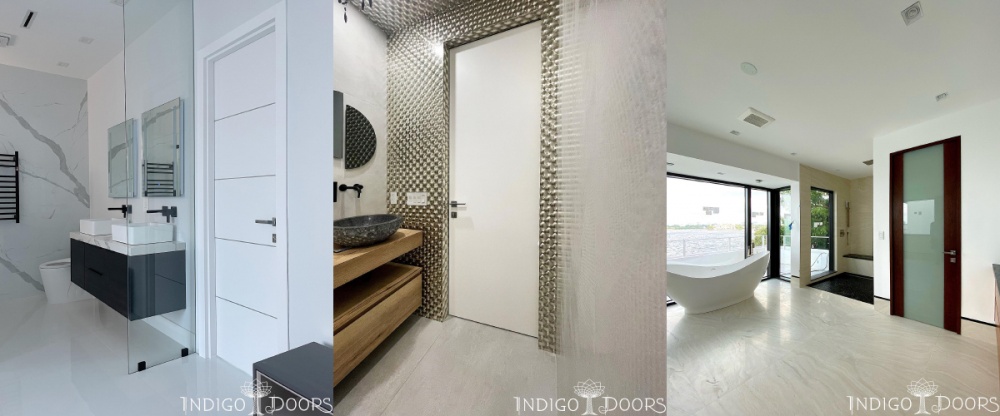
Importance of Proper Door Selection
Choosing the right interior doors for high-moisture environments is more than just a matter of aesthetics—it's a practical consideration essential for maintaining the integrity and functionality of your living spaces. Proper door selection can prevent costly damage caused by moisture-related issues such as warping, swelling, and mold growth.
Investing in quality, moisture-resistant doors not only enhances the longevity of your interior spaces but also adds value to your property. By selecting doors specifically designed to withstand high-moisture environments, homeowners can enjoy peace of mind knowing that their investment will stand the test of time, even in challenging conditions.
When it comes to door selection, it's essential to prioritize durability and moisture resistance over purely aesthetic considerations. While style and design are important factors, they should be balanced with the practical requirements of the environment to ensure optimal performance and longevity.
Materials Matter: Exploring Moisture-Resistant Options
In the quest for moisture-resistant interior doors, the choice of materials plays a crucial role. Several options are available, each with its own set of pros and cons in high-moisture environments. Exploring these materials can help homeowners and designers make informed decisions based on their specific needs and preferences.
- One popular choice for moisture-resistant doors is fiberglass. Fiberglass doors offer exceptional durability and resistance to moisture, making them ideal for high-moisture environments like bathrooms and pool areas. Unlike wood, fiberglass does not warp, rot, or swell when exposed to moisture, ensuring long-term performance and minimal maintenance requirements.
- Another option worth considering is vinyl doors. Vinyl is inherently moisture-resistant, making it suitable for use in wet environments where traditional wooden doors may fail. Vinyl doors are also highly durable and low-maintenance, making them an attractive choice for homeowners seeking hassle-free solutions for high-moisture areas.
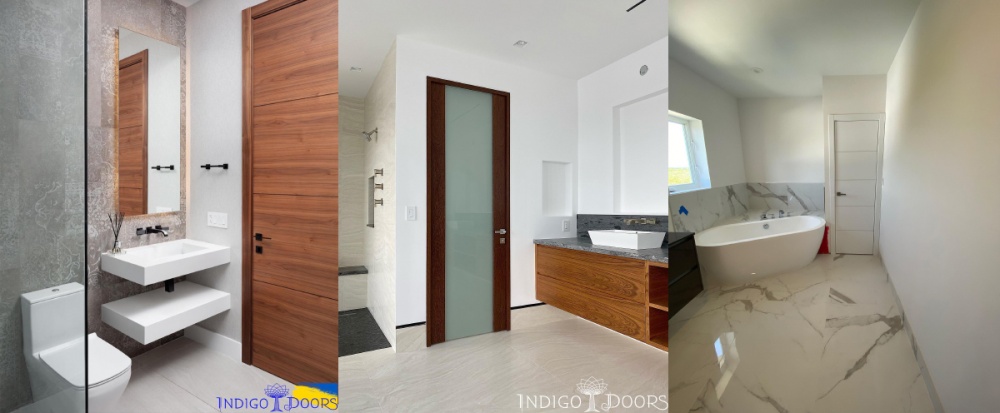
Solid Wood Doors: Pros and Cons in Moisture-Prone Areas
Solid wood doors have long been favored for their timeless beauty and natural warmth. However, in high-moisture environments, solid wood doors may pose certain challenges. While hardwoods like oak and mahogany are less prone to warping and swelling compared to softwoods, they are still susceptible to moisture-related damage over time.
One advantage of solid wood doors is their aesthetic appeal. With their rich grain patterns and luxurious finishes, solid wood doors add a touch of elegance to any interior space. However, maintaining the beauty of solid wood doors in high-moisture areas requires extra care and attention to prevent moisture infiltration and mitigate the risk of damage.
To minimize the effects of moisture on solid wood doors, proper sealing and finishing are essential. Applying a high-quality sealant or finish can help create a protective barrier that prevents moisture from penetrating the wood, reducing the risk of warping, swelling, and decay. Additionally, regular maintenance, including resealing or refinishing as needed, can prolong the life of solid wood doors in moisture-prone areas.
While solid wood doors offer undeniable beauty and charm, they may not be the most practical choice for high-moisture environments without proper maintenance and precautions. Homeowners considering solid wood doors for bathrooms, pools, or spa rooms should weigh the aesthetic appeal against the potential challenges of moisture-related damage and the additional maintenance required to keep these doors in optimal condition.
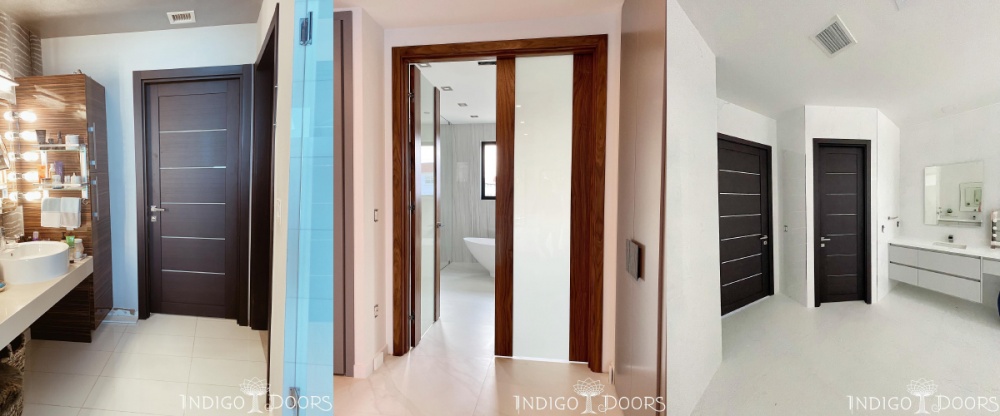
Engineered Wood Doors: A Viable Alternative
For homeowners seeking the beauty of wood without the drawbacks of solid wood doors in high-moisture environments, engineered wood doors present a viable alternative. Engineered wood doors are constructed from multiple layers of wood veneers bonded together with adhesives, resulting in a stable and durable product that resists warping and swelling.
-
Enhanced Moisture Resistance: One of the key advantages of engineered wood doors is their enhanced moisture resistance. Unlike solid wood doors, which may expand and contract with changes in humidity, engineered wood doors are less susceptible to moisture-related damage, making them suitable for use in bathrooms, pools, and other high-moisture areas.
-
Versatility in Design: In addition to their moisture resistance, engineered wood doors offer versatility in design and finish options. They can be customized to mimic the look of various wood species, allowing homeowners to achieve the desired aesthetic without compromising on performance. Whether you prefer the rustic charm of reclaimed wood or the sleek elegance of cherry or walnut, engineered wood doors can deliver the look you want with the durability you need in high-moisture environments.
-
Environmental Sustainability: Another benefit of engineered wood doors is their environmental sustainability. By using thin veneers of hardwood over a substrate of composite wood materials, engineered wood doors maximize the use of valuable timber resources while minimizing waste. This eco-friendly approach makes engineered wood doors an attractive choice for environmentally conscious homeowners seeking sustainable solutions for their interior spaces.
While engineered wood doors offer several advantages over solid wood doors in high-moisture environments, it's essential to choose a reputable manufacturer and ensure proper installation to maximize their performance and longevity. With the right materials and installation techniques, engineered wood doors can provide years of beauty and durability in even the most challenging conditions.
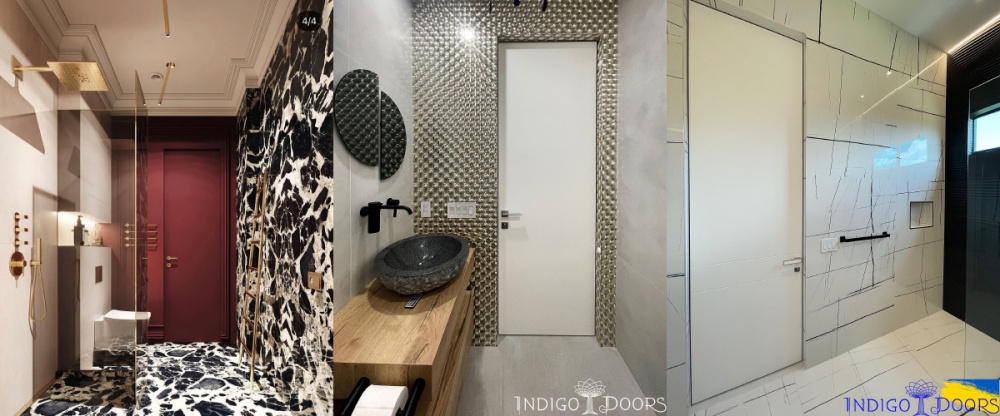
Fiberglass Doors: Resilience in Wet Environments
When it comes to moisture-resistant interior doors, fiberglass stands out as a top contender. Fiberglass doors offer unparalleled resilience to moisture, making them an ideal choice for high-moisture environments such as bathrooms, pools, and spa rooms. With their exceptional durability and low maintenance requirements, fiberglass doors provide a practical and long-lasting solution for homeowners seeking peace of mind in wet areas.
- One of the primary advantages of fiberglass doors is their resistance to warping, swelling, and rotting, even when exposed to prolonged moisture. Unlike traditional wooden doors, which may deteriorate over time in humid conditions, fiberglass doors remain structurally stable and unaffected by moisture, ensuring reliable performance year after year.
- In addition to their moisture resistance, fiberglass doors are highly customizable in terms of design, style, and finish options. Whether you prefer the look of wood grain or a smooth, contemporary surface, fiberglass doors can be tailored to suit your aesthetic preferences and complement your interior décor.
- Another benefit of fiberglass doors is their energy efficiency. With superior insulation properties compared to wood or metal doors, fiberglass doors help maintain consistent indoor temperatures, reducing energy consumption and lowering heating and cooling costs. By investing in energy-efficient doors, homeowners can enjoy year-round comfort while saving money on utility bills.
While fiberglass doors may have a higher upfront cost than some other materials, their long-term durability and low maintenance requirements make them a cost-effective choice over time. With minimal upkeep and the assurance of reliable performance in high-moisture environments, fiberglass doors offer excellent value for homeowners looking to invest in quality door solutions for their homes.
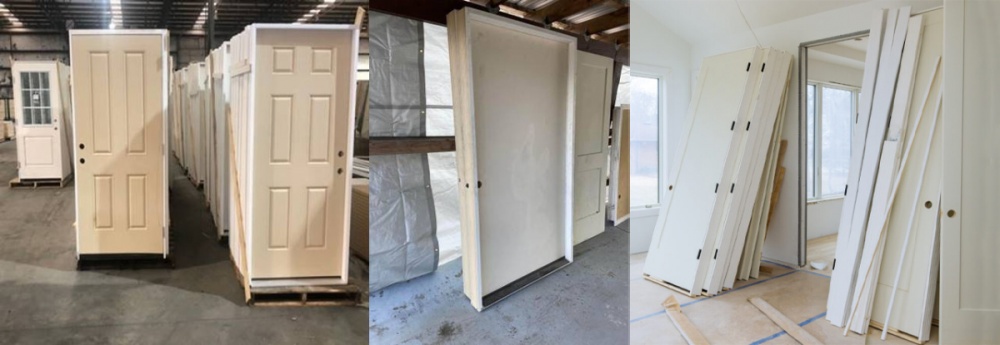
Vinyl Doors: Durability and Moisture Resistance
Vinyl doors are another popular choice for high-moisture environments due to their exceptional durability and moisture resistance. Made from polyvinyl chloride (PVC), vinyl doors offer superior resistance to moisture, rot, and corrosion, making them ideal for bathrooms, pools, and other wet areas where traditional wooden doors may fail.
- One of the key advantages of vinyl doors is their low maintenance requirements. Unlike wood doors that require regular sealing, staining, or painting to protect against moisture damage, vinyl doors are virtually maintenance-free. With their smooth, non-porous surface, vinyl doors are easy to clean and resistant to stains, making them an ideal choice for busy households.
- In addition to their moisture resistance, vinyl doors are highly durable and long-lasting. Unlike wood doors that may deteriorate over time due to exposure to moisture, UV rays, and fluctuating temperatures, vinyl doors maintain their structural integrity and appearance for years with minimal upkeep. This makes them a practical and cost-effective investment for homeowners seeking reliable door solutions for their high-moisture environments.
- Another benefit of vinyl doors is their affordability. Compared to other materials such as fiberglass or solid wood, vinyl doors are often more budget-friendly, making them an attractive option for homeowners looking to maximize value without compromising on quality. With their combination of durability, moisture resistance, and affordability, vinyl doors offer an excellent solution for high-moisture areas where traditional wooden doors may not suffice.
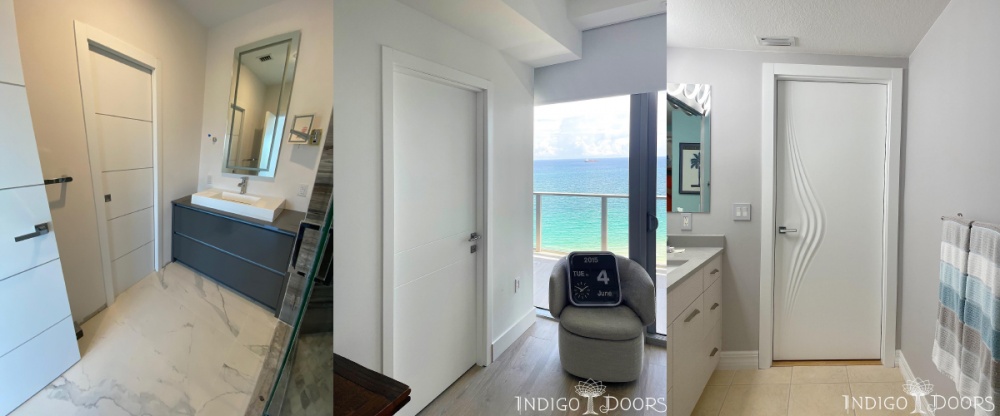
Considerations for Door Hardware and Hinges
Choosing the right door hardware and hinges is essential for ensuring the smooth operation and longevity of interior doors in high-moisture environments. When selecting door hardware, it's important to opt for materials that are resistant to corrosion and rust, such as stainless steel or brass, to withstand exposure to moisture and humidity.
In addition to durability, consider the style and design of door hardware to complement the overall aesthetic of your interior space. Whether you prefer modern, minimalist designs or classic, ornate styles, there are a variety of door hardware options available to suit your preferences and enhance the visual appeal of your doors.
When it comes to hinges, opt for high-quality, corrosion-resistant hinges that can withstand the rigors of high-moisture environments. Stainless steel hinges are an excellent choice for bathrooms, pools, and spa rooms, as they offer superior durability and resistance to rust and corrosion, ensuring smooth door operation and longevity.
Proper installation of door hardware and hinges is also crucial for optimal performance and longevity. Ensure that hinges are securely attached to the door and frame, and that doors are properly aligned to prevent binding or sticking. By investing in quality door hardware and hinges and ensuring proper installation, homeowners can enjoy smooth door operation and minimize maintenance requirements in high-moisture environments.

Sealing and Finishing: Enhancing Moisture Resistance
Sealing and finishing interior doors is crucial for enhancing moisture resistance and protecting against damage in high-moisture environments. Proper sealing and finishing create a protective barrier that prevents moisture from penetrating the wood, reducing the risk of warping, swelling, and decay.
-
Surface Preparation: Before applying sealant or finish, it's important to properly prepare the surface of the door by sanding and cleaning to remove any dirt, dust, or debris. This ensures proper adhesion and a smooth, uniform finish.
-
Selection of Sealant or Finish: Choose a high-quality sealant or finish specifically designed for interior doors and follow the manufacturer's instructions for application. Consider the level of protection needed for your specific environment. In high-moisture areas like bathrooms and pool rooms, opt for a moisture-resistant sealant or finish that provides maximum protection against water damage. For areas with less humidity, a standard sealant or finish may suffice.
-
Aesthetic Considerations: In addition to moisture resistance, consider the aesthetic impact of sealant or finish on the appearance of the door. Choose a finish that enhances the natural beauty of the wood and complements your interior décor. Whether you prefer a glossy, satin, or matte finish, there are a variety of options available to achieve the desired look.
Regular maintenance of sealed and finished doors is essential for preserving their appearance and performance over time. Inspect doors periodically for signs of wear or damage, and reapply sealant or finish as needed to maintain optimal moisture resistance. By investing in proper sealing and finishing, homeowners can ensure the longevity and durability of their interior doors in high-moisture environments.
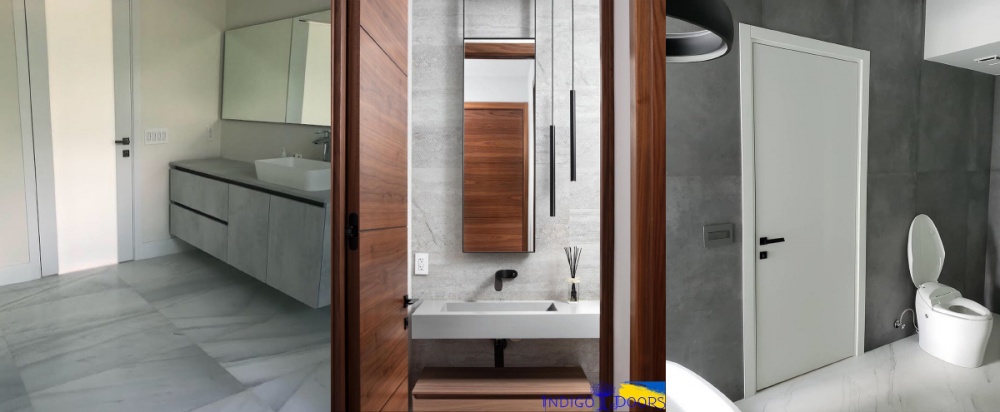
Maintenance Tips for Longevity
Proper maintenance is key to ensuring the longevity and performance of interior doors in high-moisture environments. By following these maintenance tips, homeowners can protect their doors from damage and preserve their beauty for years to come.
- Regular cleaning is essential for removing dirt, dust, and grime that can accumulate on the surface of doors over time. Use a mild detergent and warm water to clean doors, and avoid harsh chemicals or abrasive cleaners that can damage the finish.
- Inspect doors periodically for signs of wear or damage, such as warping, swelling, or peeling finish. Address any issues promptly to prevent further damage and maintain the structural integrity of the door.
- Ensure proper ventilation in high-moisture areas to reduce humidity levels and minimize the risk of moisture-related damage to doors. Use exhaust fans or open windows to allow fresh air to circulate and help dry out the space.
- Consider installing a dehumidifier in particularly humid areas to control moisture levels and protect doors from damage. A dehumidifier can help maintain optimal humidity levels and prevent the growth of mold and mildew.
Balancing Aesthetics with Functionality
When choosing interior doors for high-moisture environments, it's essential to strike a balance between aesthetics and functionality. While style and design are important considerations, they should be complemented by practical features that ensure the longevity and performance of the doors in challenging conditions.
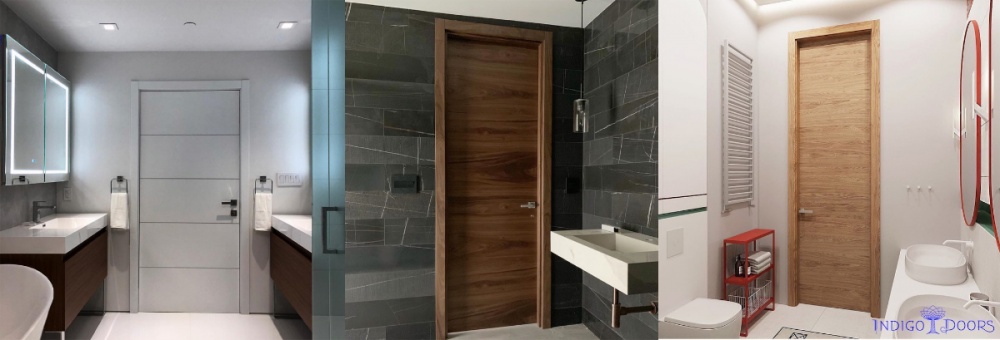
-
Durable Materials: Opt for materials that offer both durability and aesthetic appeal, such as fiberglass or vinyl, which provide exceptional moisture resistance without sacrificing style. These materials come in a variety of finishes and designs, allowing homeowners to achieve the desired look while ensuring reliable performance in high-moisture areas.
-
Design Compatibility: Consider the overall design scheme of your interior space when selecting doors, ensuring that they complement the existing décor and enhance the visual appeal of the room. Whether you prefer a sleek, contemporary look or a more traditional design, there are plenty of door options available to suit your style preferences and elevate the aesthetic of your home.
-
Functional Features: In addition to aesthetics, prioritize features that enhance the functionality of the doors, such as energy efficiency, sound insulation, and ease of maintenance. Choose doors with insulated cores to improve energy efficiency and reduce heating and cooling costs, particularly in high-moisture areas where temperature fluctuations are common.
Installation Tips for Optimal Performance
Proper installation is crucial for ensuring the optimal performance and longevity of interior doors in high-moisture environments. Follow these installation tips to ensure your doors are installed correctly and function as intended in challenging conditions.
- Start by choosing the right type of door for your specific environment, taking into account factors such as moisture resistance, durability, and aesthetic appeal. Fiberglass and vinyl doors are popular choices for high-moisture areas due to their exceptional durability and resistance to moisture, making them ideal for bathrooms, pools, and spa rooms.
- Measure the opening carefully to ensure the door fits properly and operates smoothly. Take into account any obstacles or obstructions that may affect the installation process, such as uneven floors or walls.
- Use high-quality hardware and hinges that are specifically designed for use in high-moisture environments. Stainless steel or brass hardware is resistant to corrosion and rust, ensuring reliable performance and longevity in wet conditions.
- Follow the manufacturer's instructions carefully when installing the door, paying attention to details such as proper sealing, alignment, and adjustment. Ensure that the door is properly sealed and finished to enhance moisture resistance and protect against damage.
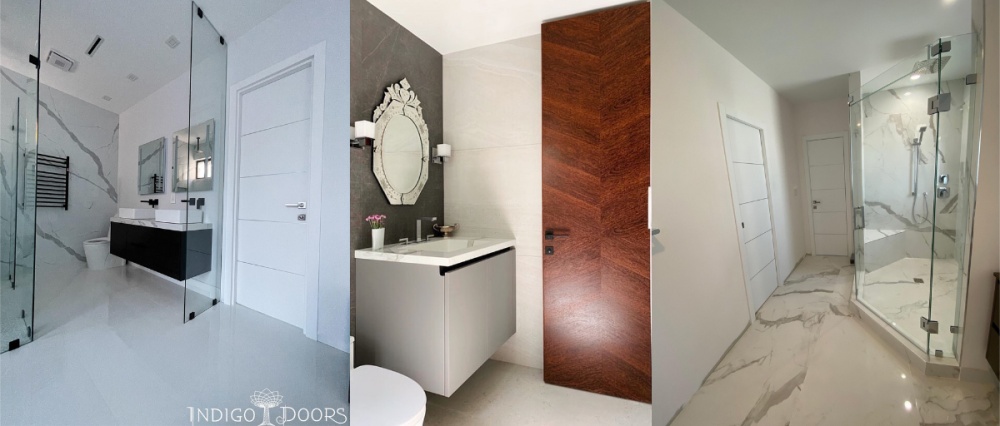
Budgeting for High-Moisture Door Solutions
When budgeting for high-moisture door solutions, it's important to consider both upfront costs and long-term value. While certain materials may have a higher initial cost, they can offer significant savings over time through reduced maintenance and replacement expenses.
Fiberglass and vinyl doors, for example, may have a higher upfront cost compared to traditional wooden doors, but their exceptional durability and resistance to moisture can result in long-term savings by eliminating the need for frequent repairs or replacements.
Consider the overall lifecycle cost of different door options, taking into account factors such as maintenance requirements, energy efficiency, and durability. While some materials may be more expensive initially, they can provide greater value in the long run by minimizing ongoing maintenance and replacement costs.
When budgeting for high-moisture door solutions, it's also important to consider the potential return on investment in terms of improved property value and energy efficiency. Investing in quality doors that enhance the functionality and aesthetics of your home can pay dividends in the form of increased resale value and reduced utility bills.
Before making a decision, compare quotes from multiple suppliers and contractors to ensure you're getting the best value for your money. Consider factors such as material quality, warranty coverage, and installation services to make an informed decision that meets your budgetary constraints and performance requirements.
In conclusion, choosing the right interior doors for high-moisture environments requires careful consideration of factors such as moisture resistance, durability, aesthetics, and budget. By selecting materials specifically designed to withstand the challenges posed by moisture-rich environments and following proper installation and maintenance practices, homeowners can ensure the longevity and performance of their doors for years to come. Whether you opt for fiberglass, vinyl, engineered wood, or another moisture-resistant material, investing in quality door solutions can enhance the beauty, functionality, and value of your home in wet areas like bathrooms, pools, and spa rooms.


